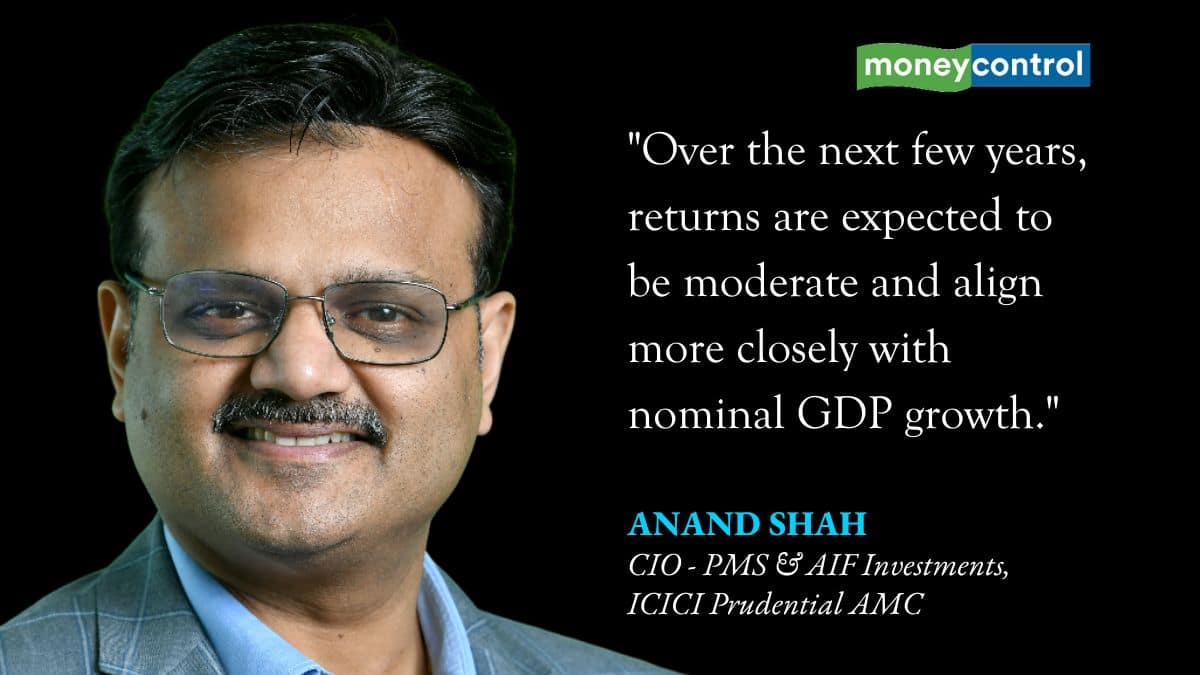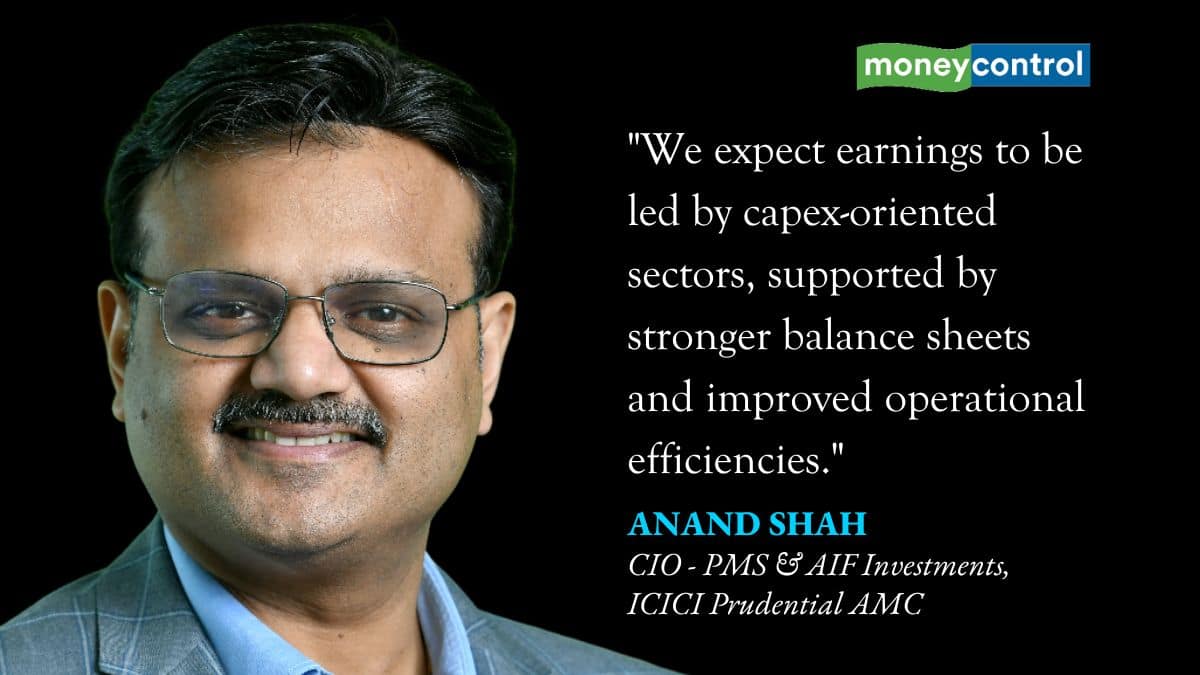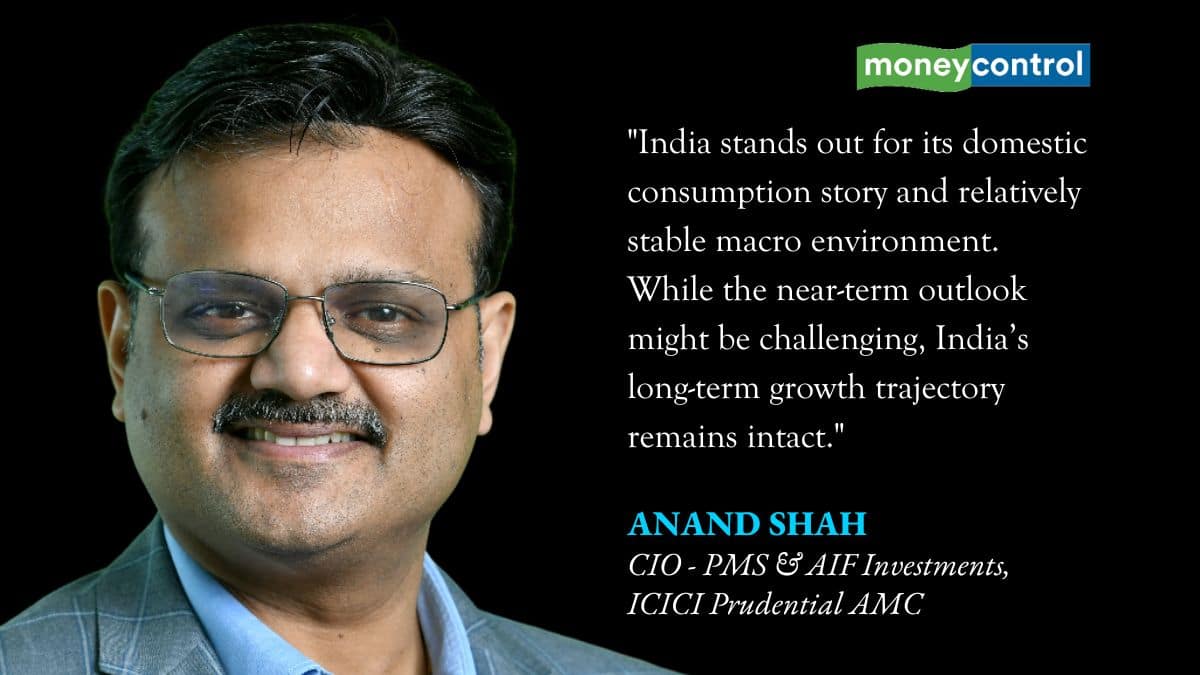



Given the prevailing uncertainty in global markets and economies, the optimal approach would be to have a staggered investment approach over lump-sum deployment, said Anand Shah, Chief Investment Officer, PMS and AIF Investments, ICICI Prudential Asset Management Company.
US President Donald Trump's ever-changing tariff measures have sent shockwaves through markets worldwide, fuelling high volatility, deepening economic uncertainty and triggering massive financial losses.
In an interview with Moneycontrol, Shah talked about his expectations from the Indian equity market, the outlook for fourth-quarter earnings and how investors should tread given the current situation.
How much of a challenge do you think the Trump tariffs will be for Indian markets and the economy? What kind of impact are you estimating?
Tariffs essentially act as a consumption tax on US consumers, and are expected to be inflationary, potentially slowing down US growth. In response, governments across regions—Europe, China, Japan, India—could counter with domestic stimulus measures, which could shift investor interest towards local, demand-driven sectors.
Also read | Why investors should look at tax-free bonds now
For Indian exporters, the impact depends on pricing power—those that can pass on costs may maintain margins, while others could see pressure. For global manufacturers with direct US exposure, it’s either a margin challenge, a demand challenge or both. We are, therefore, focusing on companies with resilient balance sheets and strong domestic linkages.
Given the correction and recovery in markets, do you think the worst is behind us? Or could it get more brutal from here?
The correction was both overdue and healthy. While it is hard to predict if the worst is behind us, we do expect volatility to persist. From an investor’s standpoint, the phase of outsized returns seems to be over. The past few years saw exceptional profit and market growth, creating high return expectations. Further, a broad-based rally across market caps and sectors allowed funds to generate alpha over and above the strong market returns. Going forward, we expect this to normalise. Over the next few years, returns are expected to be moderate and align more closely with nominal GDP growth.

What about valuations? Do you think further correction is needed to reach fair value levels?
Relative to long-term averages, current P/E multiples are neither excessive nor cheap. Valuations across market caps have corrected from recent peaks. If earnings growth sustains at around 10–11 percent, the current market levels could hold. However, earnings disappointments or macro headwinds could trigger further correction. Additional risks include a retreat in capital flows and a rise in perceived risk premiums, especially in light of US tariff actions.
What is the most important factor to monitor in the markets right now?
Multiple factors warrant attention. Externally, a sharp slowdown in US growth could hurt exports and delay the capex cycle. Inflation trends and central bank responses—both domestic and global—will be critical, especially how they balance growth and inflation. US tariff actions and possible retaliation could reshape global trade and capital allocation. We are also monitoring movements in commodity prices and currency trends, which could add further complexity to the outlook.
What are your expectations from the Q4 earnings season? Are the worst of the downgrades behind us?
We expect earnings to be led by capex-oriented sectors, supported by stronger balance sheets and improved operational efficiencies. Government and private sector capital expenditure are showing signs of revival. Banks have seen asset quality improve and capital adequacy strengthen. However, consumption-led sectors are likely to report relatively muted earnings. Unless there are macro shocks, downgrades should moderate from here.

How are you balancing risk and return in this uncertain market?
We prefer large-caps while being selective in the mid- and small-cap segments, especially after the recent correction. Our approach remains bottom-up, with close attention to company and sector fundamentals, along with valuations. This helps us dynamically adjust exposure based on evolving risks and opportunities.
Also read | 34 SGB issues coming up for premature redemption: Should you redeem or hold?
Where are you finding attractive opportunities in terms of valuations? Any recent picks?
We continue to like banking, real estate, metals and select domestic cyclicals. India has a structural edge in metals due to access to key raw materials and, thus, cost competitiveness. Banking remains robust, supported by clean balance sheets and strong credit demand. These sectors offer long-term value even in a volatile environment. Certain segments of the capex cycle—like infrastructure and construction-related businesses— are likely to see encouraging demand tailwinds.
Are there any sectors you have exited recently?
We have maintained underweight positions in IT, FMCG and pharma. IT, in particular, is vulnerable, given its dependence on US corporate spending, which may face headwinds amid slower US growth and higher inflation.
How should investors approach small- and mid-caps in FY26?
These segments offer opportunities, especially after the recent correction. However, risk remains elevated. Stock selection and sector allocation will be very crucial and one should avoid momentum-driven stocks. A staggered, long-term investment focused on earnings resilience and balance sheet strength is recommended.
With global markets under pressure—China, Europe, the US—do you think India is the safest bet, or are there other geographies worth considering?
India stands out for its domestic consumption story and relatively stable macro environment. While the near-term outlook might be challenging due to global economic uncertainties, India’s long-term growth trajectory remains intact, driven by favourable demographics, digitalisation, infrastructure expansion, financialisation and a rising middle class.

Structurally, we believe India Inc. can sustain earnings growth rate in line with nominal GDP growth. We expect corporate earnings to benefit from a revival in capital expenditure—both on the government and private front—supported by healthy balance sheets and improved operational efficiencies witnessed over the recent years. Further, synchronised rate cuts and easing monetary conditions in major economies and in India are likely to support this outlook. As a result, India appears to be better placed than most global peers.
Also read | When panic hits markets, zoom out to see the big picture
What are clients most concerned about in conversations with you?
Most conversations revolve around navigating volatility, understanding if this is a good time to make a sizeable deployment, and asset allocation. There is growing interest in PMS (portfolio management services) and AIFs (alternative investment funds), but at the same time there are concerns about elevated small-cap valuations and global uncertainties. Investors are also seeking clarity on the earnings trajectory and sectoral leadership.
What’s your advice to investors reacting to daily market moves and developments?
Focus on the long term. Market noise can lead to emotional decisions. Stay disciplined with asset allocation and diversify. Expect normalised returns—don’t chase past performance. Investing is a marathon, not a sprint.
If someone has Rs 10 lakh to invest right now, what asset allocation strategy would you recommend?
We recommend a multi-asset allocation approach. Irrespective of the risk profile, it is best to spread investments across various asset classes like equity, debt, commodities, real estate, AIF strategies, etc. In terms of portfolio breakup, it is best to consult a financial advisor as the risk appetite and financial goals of each investor is varied. Given the prevailing uncertainty in global markets and economies, the optimal approach would be to have a staggered investment approach over lump-sum deployment.
Also read | Falling interest rates: Senior citizens should lock into longer-term FDs, small saving instruments
Discover the latest Business News, Sensex, and Nifty updates. Obtain Personal Finance insights, tax queries, and expert opinions on Moneycontrol or download the Moneycontrol App to stay updated!